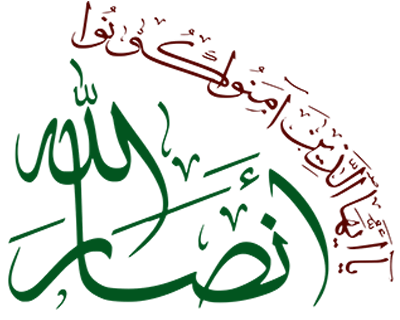Published: Rabiʻ I 25, 1447 AH
A year has passed since the “pager” crime carried out by the Zionist enemy in Lebanon, and the scars remain vivid in the collective consciousness. The incident was not merely an attack on fighters or communication devices; it was a deep wound in the heart of an entire community, where Lebanese homes turned into houses of mourning and small dreams into aching memories.
The explosions occurred in two distinct waves: the first struck AR-924 pager devices on Tuesday, 17 September 2024, at around 3:00 p.m.; the second hit ICOM v82 wireless devices on Wednesday, 18 September, at approximately 5:15 p.m. The blasts were recorded across various Lebanese areas, with the majority concentrated in southern Lebanon and the southern suburbs of Beirut. The toll reached 39 civilian martyrs, while injuries exceeded 3,000, most of them to the eyes, hands, and flanks.
The small electronic “pager” device is used to receive text messages or notifications without the need for internet access. It was widely used in the 1990s and the early 2000s as a primary means of communication before mobile phones became widespread. Hezbollah fighters used these devices to communicate with one another via messages, believing they could avoid tracking by the Israeli entity because such devices do not require internet or wireless networks and do not use geolocation data — factors that make them relatively safer compared to smartphones.
“A Declaration of War,” Says Leaders
In describing the attack, the martyr of humanity — Hezbollah Secretary-General Sayyed Hassan Nasrallah — said the enemy intended, through the Tuesday and Wednesday explosions, to kill some 5,000 people in two minutes, and anyone in their vicinity without regard. He affirmed that what happened was a major terrorist operation, two large massacres, and said the events of Tuesday and Wednesday could be called “a declaration of war,” vowing severe retribution and just punishment against the Israeli enemy, “from where it expects it and where it does not.”
Hezbollah suffered a heavy blow on both security and humanitarian levels in an unprecedented development in the history of the Lebanese resistance; this type of killing and targeting is unprecedented globally, which made 17 and 18 September 2024 two unbearably heavy days for Lebanon.
One of the prime objectives of the Israeli entity through the operation was to deliver a decisive blow that would topple Hezbollah and remove it from the equation of support for Gaza, as the Lebanese front represented a major nightmare for it. The operation also aimed to break Hezbollah entirely, expel it from the resistance axis, and eliminate its vital role in the region. The attack occurred amid broader pressure on the front: most residents were driven from northern occupied Palestine, some settlements were turned into deserted towns such as Ayta ash Shab, and the wider context pointed to an attempt to reshape the balance of power in the region.
Despite the painful blow, Sayyed Nasrallah declared in his post-incident speech that Lebanon would not abandon Gaza, challenging Netanyahu and Gallant with the words: “You will not be able to return the residents to the north — this is the challenge between us.” Yet events continued to deteriorate: the Lebanese and the free people of the nation did not fully grasp that the next targets would include Sayyed Hassan Nasrallah himself and Sayyed Hashim Safi al-Din, and that Hezbollah would face harsh days and major conspiracies threatening its resistant existence.
Hezbollah’s Deputy Secretary-General, Sheikh Naim Qassem, acknowledged the existence of a major gap revealed by the pager crime. Although the purchase operation had been disguised, it became clear to the party that it had been exposed to the Israeli enemy. It also became clear that the type of explosives placed in the pagers was “exceptional” and could not be detected via usual inspection methods; the party had been unable to detect this vulnerability, making the operation a very significant strike against Hezbollah.
The Enemy is an Enemy to All — Vigilance is Required
A year on from the crime, the magnitude of the event and the malice of Zionist planning are clear, as is its constant watchfulness for fighters in the resistance axis. This operation shows that the Israeli entity does not overlook its Arab surroundings but weaves long-term plans to reach its goals through qualitative strikes against its adversaries. Meanwhile, Arab and Islamic states deal with the entity with a degree of negligence and without sufficient probing into its aggressive policies targeting the region.
Although Hezbollah was struck by Zionist Jewish malice, its roots remain firmly rooted in Lebanon and in the resistance axis. The shocks the party received were quickly used to repair its structure and capabilities, but Lebanon’s internal situation and the regional environment do not aid a rapid recovery. After the “pager” crime came the assassination of Sayyed Hassan Nasrallah, the rise of takfiri groups to power in Syria, then the election of a president and government in Lebanon loyal to America and the Israeli entity after more than 50 days of Zionist aggression, a failed ground advance to occupy south Lebanon, and the US–Israeli aggression on the Islamic Republic of Iran. These are all indicators that the enemy continues to implement its criminal plan to complete its control of the region and become its sole emperor.
What happened in Lebanon is a major lesson that must be absorbed by everyone, foremost among them the Arab and Islamic states that believe they are distant from the circle of targeting, whether due to normalization with the entity or trust in American protection. “What happened in Qatar is a clear witness to that,” the record states. The message is that enemy plots must be watched for closely; this is also a warning to the Yemeni interior, as the enemy now views the Yemeni front as a major source of danger and may seek every plan and means to target it. Vigilance is required; complacency toward the enemy serves no one.







